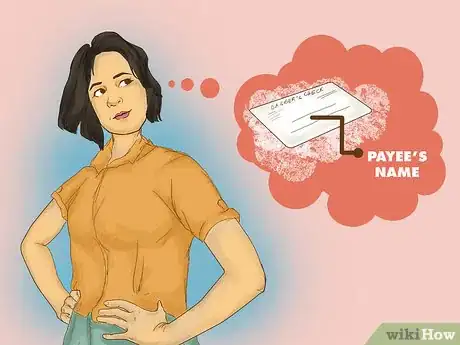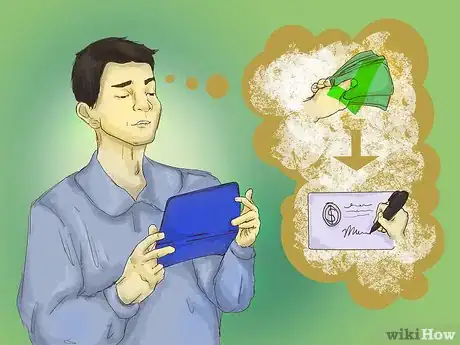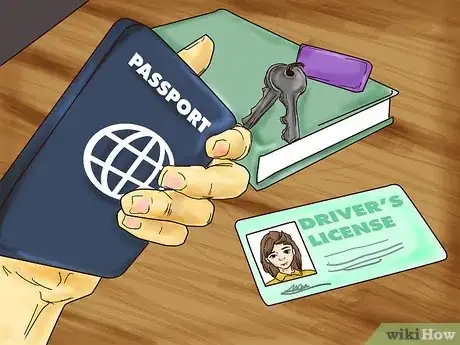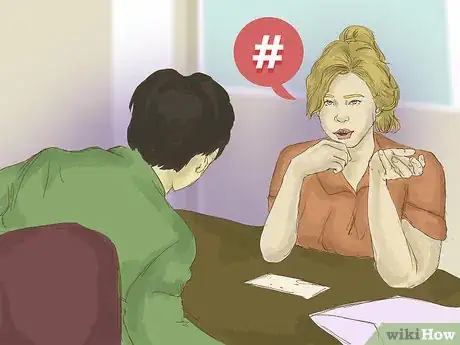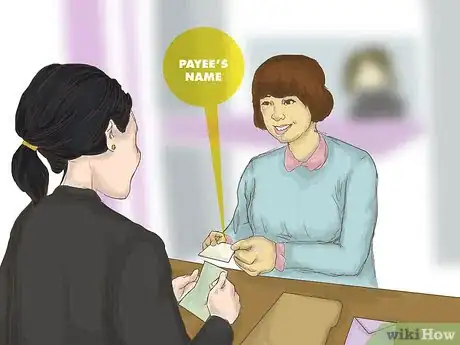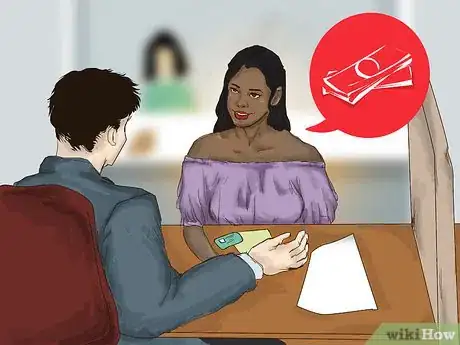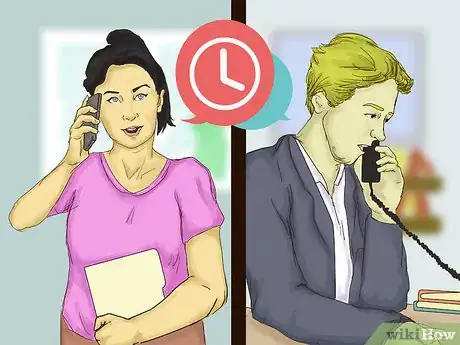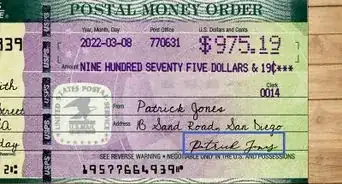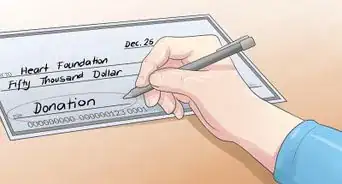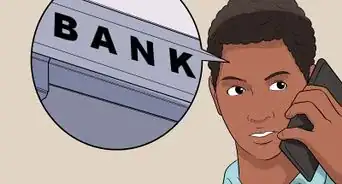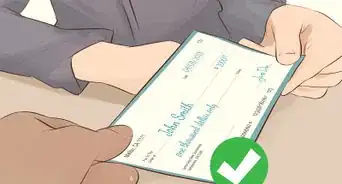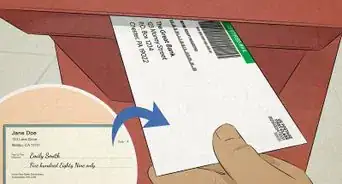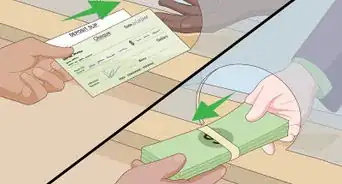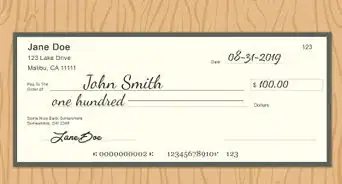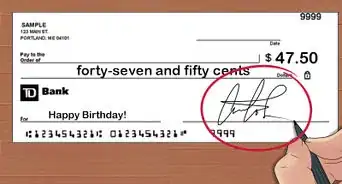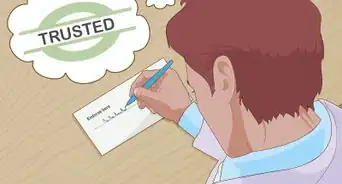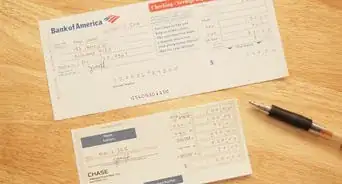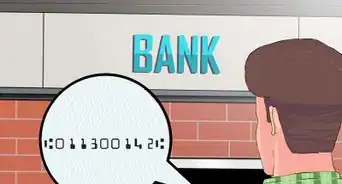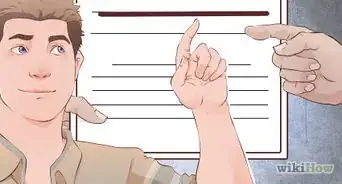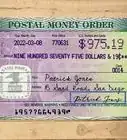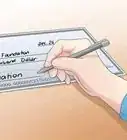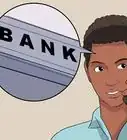This article was co-authored by Michael R. Lewis. Michael R. Lewis is a retired corporate executive, entrepreneur, and investment advisor in Texas. He has over 40 years of experience in business and finance, including as a Vice President for Blue Cross Blue Shield of Texas. He has a BBA in Industrial Management from the University of Texas at Austin.
This article has been viewed 336,954 times.
A cashier's check is a check that offers significantly more security to the payee because it's drawn against the bank's funds and not against an individual account holder's funds. However, when it comes time to obtain a cashier's check, you won't be the one who fills it out. Your banker will fill it out and you'll provide the necessary funds to the bank.
Steps
Preparing to Get a Cashier's Check
-
1Identify the name of the payee. Your banker will fill out the cashier's check, so you'll need to provide him or her with the exact name of the payee.
-
2Ensure that your account can cover the amount of the cashier's check. Even though, as noted above, cashier's checks are drawn against the bank's funds, the bank isn't performing an act of charity. You'll need to transfer the amount requested for the cashier's check from your account to the bank's account. If you have insufficient funds, you'll need to make a deposit to cover the amount of the cashier's check.Advertisement
-
3Ask about the fee associated with a cashier's check. Contact your bank and request information about the fee you'll pay for a cashier's check.[1] You'll need to ensure that your account can cover the fee plus the amount of the check unless you're opting to pay the fee out of pocket.
-
4Bring your identification to the bank. Even though you're an account holder at the bank, you might be required to show identification when you request a cashier's check. Be sure to have a government-sponsored identification document on hand. Accepted forms of identification are:
- A driver's license
- A passport
Filling out the Check
-
1Visit your bank. This has to be done in person. You won't be able to request a cashier's check over the phone or online.
-
2Talk to a teller. At most banks, any teller can fill out a cashier's check for you. At some banks, and depending on the amount of the check, you might need to talk to a customer service representative.
- You may need to fill out a form for your cashier's check.
-
3Provide your account information to the teller. The teller will need to know your account number so that the money (and the fee) can be withdrawn from your account.
-
4Show your identification to the teller. Even though you have your account information handy, the teller will likely need to see your identification just to be certain that you are who you say you are.
-
5Provide the payee's name. It's best to have it written out so that the teller can spell it correctly. Remember, the teller will actually fill out the check for you.
-
6Provide the amount of the check. The teller will need to know the amount to put on the check. Make sure that's clear.
-
7Review the check before walking away. It's possible that the teller misspelled the payee's name or misheard the amount of the check. Give the check a thorough review, ensuring that all of the information is correct.
Using the Cashier's Check
-
1Keep the cashier's check in a secure place until it's needed. Although you can recover the funds if the check is lost, that's not a process you want to go through. Keep that check in a locked, fireproof box until you're ready to present it.
-
2Hand-deliver the check to the payee. Unless you absolutely have to, avoid using mail to deliver a large check. The potential for a lost or stolen cashier's check is just a little too high.
- If you really want to mail the check, use a secure method like Priority Mail Express and purchase enough insurance to cover the value of the check.[2]
-
3Ask the seller about a waiting period. Even though you've given the seller a bona fide cashier's check, his or her bank might still place a "hold" on it due to the amount involved. Understand that up front so that you'll know if there's still a delay in your transaction.
-
4Return the check to your bank if the deal falls through. If you shook hands and something went wrong with the deal, you haven't lost your money forever. You can take the check back to the bank where a teller will void it and credit your account with the face value of the amount. You might forfeit the fee, though.
Warnings
- There have been some scams recently involving cashier's checks, so be very careful about receiving cashier's checks.⧼thumbs_response⧽
References
About This Article
To fill out a cashier’s check, start by going to your bank and meeting with a teller. When you arrive, give the teller your account information and a form of identification so they can pull up your account. Then, provide the teller with the name of the payee and the amount you’d like the check made out for. Once the teller has verified that you have enough money in your account and filled out the check, look it over before you leave to make sure the information is all correct. For tips from our Financial reviewer on the best ways to deliver a cashier’s check to a payee, read on!
